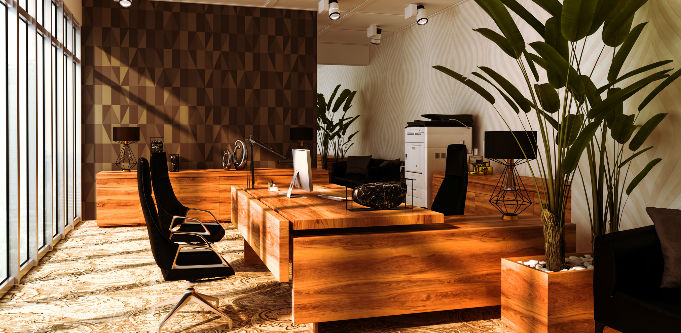
Have you ever walked across solid oak floors, or sat behind a mahogany desk and felt an unexpected sense of motivation and wellbeing?
You are not alone. The recent Workplaces: Wellness+Wood=Productivity report has proven that weaving wood into your office design and workplace can be a major driver of wellbeing, job satisfaction and productivity.
The full report builds on the biophilia hypothesis that was first popularised by biologist and author Edward Wilson — a notion that explains, “Humans have an innate tendency to seek connections with nature and other forms of life.”
And this report has shown that not only does the modern worker crave a connection to nature (like wood) in their office, it actually inspires them to become happier, more productive employees.
More wood means happier workers
The report indicated that more than 60 per cent of indoor workers in Australia will spend the bulk of their days in an office. Of those, only half will spend more than an hour outside in nature each day.
Read more about finding a responsibly sourced wood solution for your business.
Interestingly, over a third of Australian office workers aren’t satisfied with their physical working environment. The report showed that workers who were employed in places with more wood had higher levels of satisfaction, more positive associations with their workplace, higher levels of wellbeing, higher levels of concentration as well as improved moods and personal productivity.
Greater productivity from incorporating wood into the workplace
The report demonstrated that the notion of wood improving the productivity of workers was not idealistic, but built on fact.
Biophilic design in the workplace can increase productivity by 15 per cent, with those surveyed saying more exposed wood in the office improved their ability to concentrate and lifted their feeling of wellbeing.
More timber can help combat the ‘sickie’
Did you know that wood isn’t just great for productivity, it also means workers take less leave days as well?
The report showed that almost half of employees that were very dissatisfied with their physical workplace took unplanned leave. That is compared to less than a quarter of workers who are satisfied with their surroundings.
With only 59 per cent of workers presently happy with their surroundings, employers can help eliminate the ‘sickie’ (unplanned leave for no reason other than not wanting to come to work) by adding more wood into the office environment.
Wood the big trend in modern architecture
Grand Designs Australia host and architect Peter Maddison backed the findings of the Wellness+Wood=Productivity report and said that architects were now weaving more natural elements into their designs.
Maddison got a first-hand experience of the changes that wood inspired in a recent re-design of his own home.
“I pulled up the shag pile carpets, got rid of all the plaster ceilings and replaced them with timber ceilings and beautiful oak floors,” he said.
“I removed all the plastic laminate and put in a lot more timber surfaces. It brought a sense of calm, a much more relaxed feeling.”
Maddison said there was a major timber revolution in the 1970s when it came to architecture and that the trend is returning in the modern era.
“The nuts and berries architecture in the 1970s was raw, celebrating nature in architecture,” he said.
“That trend is coming back. Not as raw as the ’70s … but we are seeing the use of timber is coming back.”
How can I incorporate wood into my workplace?
For many, ripping up carpets or replacing walls, ceilings or other structural elements is likely a bridge too far.
But there are many ways to incorporate wood into the workplace without making dramatic structural changes. For example, 45 per cent of those surveyed said they could see a wooden desk from where they sat, 39 per cent could see wooden tables and 39 per cent were in view of wood shelving or cupboards.
Other wooden objects that can be brought into the workplace include doors, chairs, window or picture frames, floorboards and blinds. Of course, if you are looking to renovate, the option for timber ceiling beams and wooden panels on the walls and floors can be attractive additions as well.
In conclusion, it’s worth bearing in mind two things: One, that the average office refurbishment cycle in Australia is about seven years – so if you’re near the end of your current cycle, now’s the time to start planning for a more productive wooden workplace. And, two, that what applies in the workplace arguably translates to the home, whether it’s where a homeworker works or homework is done – adding wood will make it a more pleasant, productive environment.

Workplaces: Wellness + Wood = Productivity is a report prepared by strategic market research company pollinate and disseminated by Planet Ark’s Make It Wood program. For more information please visit makeitwood.org.


COMMENTS
Reader comments have been turned off on this post.